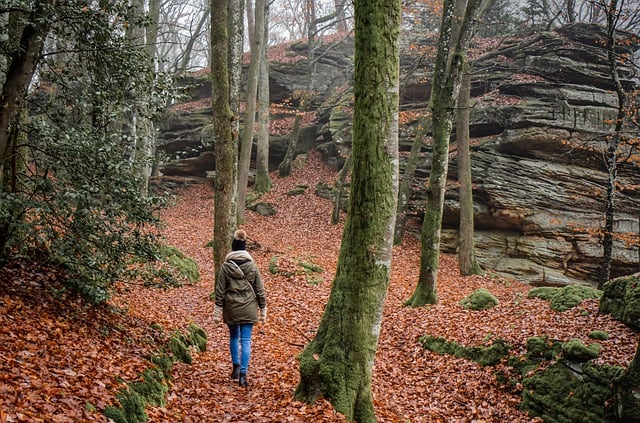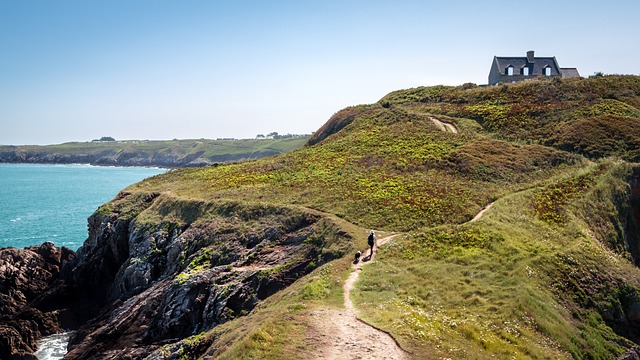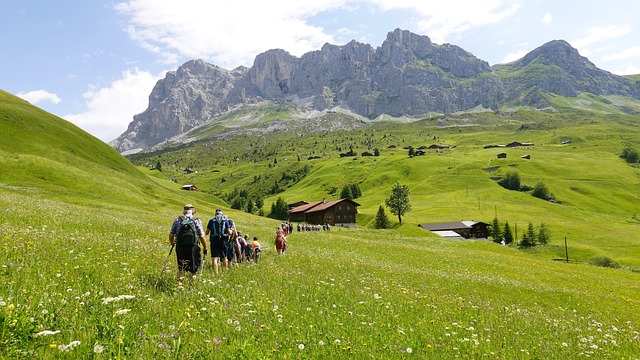
When venturing into foggy or dimly lit environments on hiking trails, a robust flashlight for hiking trails is indispensable. It should boast superior brightness, with at least 200 lumens to cut through the mist and ensure visibility, while also featuring advanced LED technology for extended battery life and power efficiency. The best models are constructed from impact-resistant materials like hard-anodized aluminum or rubber armor, offering durability and an ergonomic design that withstands rugged conditions and wet environments. They come with intuitive user interfaces to manage variable brightness settings for energy conservation and heightened illumination as needed. Additionally, these flashlights should have impact-resistant lenses, diffused light options to reduce glare, and a secure attachment method to prevent accidental drops or tripping. By considering these features, hikers can enhance their safety and trail navigation, making flashlights for hiking trails an essential piece of gear for any outdoor enthusiast.
When the trail before you is shrouded in fog, a reliable flashlight becomes an indispensable tool for hikers. This article illuminates the critical role of flashlights for hiking trails, emphasizing their importance in navigating through misty terrains. We’ll explore key features that ensure visibility and safety, analyze top-rated models tailored for foggy conditions, and delve into brightness and lumens specifications for effective illumination. Additionally, we’ll discuss the significance of battery life and power efficiency to prevent unexpected darkness on your journey. Durability and ergonomic design are also paramount in ensuring your flashlight remains a steadfast companion through rugged trails. Finally, we’ll provide practical tips to enhance your experience using a flashlight on foggy trails, ensuring you reach your destination both safely and successfully.
- Understanding the Importance of Reliable Lighting on Hiking Trails
- Key Features to Look for in a Flashlight for Hiking Trails
- Top-Rated Flashlights for Foggy Trail Conditions
- Brightness and Lumens: What You Need to Know for Effective Illumination
- Battery Life and Power Efficiency in Trail Flashlights
- Durability and Design Considerations for Outdoor Use
- Practical Tips for Using a Flashlight on Foggy Trails Safely and Effectively
Understanding the Importance of Reliable Lighting on Hiking Trails

When venturing into trail conditions obscured by fog, the importance of reliable lighting cannot be overstated. Flashlights for hiking trails serve as critical tools that enhance visibility and ensure safety in low-light environments. A dense fog can transform a well-trodden path into an unnavigable maze, where even the most familiar landscapes can vanish from sight within seconds. In such conditions, a high-quality flashlight for hiking trails is not just beneficial but indispensable. It provides illumination that allows hikers to detect obstacles, rocks, roots, or changes in terrain that could otherwise cause slips, falls, or directional errors.
The reliability of these lighting devices goes beyond the mere presence of light; it encompasses factors such as durability, battery life, and beam focus. A durable flashlight can withstand the rigors of a hike, ensuring that it is there when you need it most. Long-lasting battery performance means that your light source won’t fail at the moment you most need to see your path clearly. Furthermore, a flashlight that offers adjustable beam focus allows users to adapt their vision range according to the environment and distance, whether it be for close-up tasks or long-range visibility. When selecting a flashlight for hiking trails, prioritize models with advanced features like LED technology, which provides a more focused and energy-efficient light than traditional bulbs. These qualities make flashlights for hiking trails an essential piece of gear for any serious outdoor enthusiast.
Key Features to Look for in a Flashlight for Hiking Trails

When selecting a flashlight for hiking trails, durability is paramount due to the often unpredictable environments encountered on such excursions. A robust construction can withstand accidental drops or rough terrain, ensuring the light remains operational when needed most. Look for flashlights designed specifically for hiking trails, which typically feature high-impact resistant materials like aircraft-grade aluminum or hard-anodized finishes.
In terms of brightness and beam distance, a flashlight for hiking should offer a balance between flood and spot illumination. A floodlight beam is ideal for close-range tasks such as reading a map or setting up camp, while a spotlight can help you see further down the trail, which is crucial for identifying obstacles or navigating in low light conditions. Additionally, consider flashlights that offer multiple brightness settings, allowing you to conserve battery life when full intensity isn’t necessary and ramp up the lumens when more light is required. Features like waterproofing and impact resistance are also critical as they ensure the light functions under the foggy or wet conditions often encountered on hiking trails. Always prioritize flashlights for hiking trails that advertise these robust features to ensure a reliable light source during your outdoor adventures.
Top-Rated Flashlights for Foggy Trail Conditions

When venturing into foggy trail conditions, a reliable flashlight for hiking trails becomes an indispensable tool. The clarity of vision is paramount when maneuvering through such environments to avoid missteps or becoming disoriented. Top-rated flashlights designed for hiking trails often feature high lumen outputs that can pierce through the fog, ensuring you have a wide and bright beam to light your path. These flashlights are typically equipped with durable materials, such as anodized aluminum bodies that are both waterproof and shock resistant, providing the necessary durability against the elements. They also often include adjustable focus capabilities, allowing hikers to switch between a wide dispersed beam for distant objects or a narrow, intense beam for close-up tasks. Additionally, many models come with LED technology, offering a longer battery life compared to traditional bulbs and ensuring that your light source remains consistent throughout your journey.
Battery efficiency is another critical factor when selecting a flashlight for foggy trail conditions. The best flashlights for hiking trails are those that offer energy-saving features, such as low battery indicators, multiple brightness settings, or even rechargeable batteries with power banks. This not only extends the usability of the flashlight but also reduces the weight you carry, as you won’t need to lug around extra batteries. Furthermore, models with a user-friendly interface allow for quick and intuitive adjustments to brightness levels, which is particularly useful when sudden changes in visibility occur due to shifting fog patterns. The combination of these features in top-rated flashlights makes them indispensable for hikers who prioritize safety and preparedness while navigating through foggy terrains.
Brightness and Lumens: What You Need to Know for Effective Illumination

When embarking on a hike, especially through foggy trails, a reliable source of light is paramount for safety and visibility. Flashlights designed specifically for hiking trails must offer superior brightness to cut through the mist and ensure clear path navigation. Lumens, a measure of luminous flux, serve as a key indicator of how effectively a flashlight will illuminate an area. A higher lumen output means the light can reach further, which is crucial in low-light conditions. For instance, a flashlight with at least 200 lumens can provide ample lighting to light up the path ahead, while a model boasting 500 lumens or more can cut through denser fog and even momentarily stun wildlife if needed. Additionally, LED technology has advanced significantly, allowing for brighter lights that consume less power. This means hikers can enjoy a longer battery life without compromising on brightness. When selecting a flashlight for hiking trails, consider the lumen output that suits your needs, as well as the beam distance, which determines how far the light reaches. Also, feature-rich models with multiple settings, including red or green light options, can preserve night vision and reduce glare in foggy environments. Whether you’re navigating a well-trodden path or venturing into less-traveled territories, a bright flashlight for hiking trails is an essential tool to ensure a safe and enjoyable hike.
Battery Life and Power Efficiency in Trail Flashlights

When embarking on a hike, the reliability of your flashlight can be as critical as the sturdiness of your boots. For those navigating foggy or low-light trail conditions, flashlights for hiking trails are not just a convenience—they’re an indispensable tool. A key factor in selecting a suitable flashlight is its battery life and power efficiency. A long-lasting battery ensures that the beam illuminates your path for extended periods, a necessity when you’re deep into the wilderness where night can fall unexpectedly or linger longer than anticipated. The latest advancements in LED technology have significantly improved the energy efficiency of hiking lights, allowing for brighter light output without sacrificing battery longevity. Users benefit from high-capacity batteries that deliver a consistent lumen output, reducing the frequency of battery swaps or recharges during multi-day excursions. Additionally, features like low battery indicators and energy-saving settings help manage power consumption, guaranteeing visibility when you need it most. Investing in flashlights for hiking trails with superior battery life and power efficiency means you can rely on your light source to perform when the trail gets challenging and the shadows grow long.
Durability and Design Considerations for Outdoor Use

When selecting a flashlight for hiking trails, durability is paramount due to the often unpredictable environments encountered. A flashlight intended for outdoor use must be constructed with high-quality materials that can withstand impacts and resist water intrusion. Robust construction, typically achieved through a combination of hard-anodized aluminum bodies or rubber armor, ensures the flashlight remains operational even after encounters with rugged terrain. Moreover, the design should incorporate an ergonomic form factor to facilitate a firm grip, even when hands are wet or covered in mud. This is crucial for maintaining control over the device in slippery conditions.
Design considerations also extend to the flashlight’s user interface and functionality. A user-friendly interface allows hikers to manage the light output with ease, which can be particularly important when fumbling for a switch in low visibility. Additionally, features such as multiple brightness levels enable users to conserve battery life by using lower lumens for extended periods or increase brightness when navigating challenging sections of the trail. Impact-resistant lenses protect the light source from debris and accidental bumps, ensuring that the beam remains focused and clear. The best flashlights for hiking trails are those that harmonize these elements into a cohesive design, offering both reliability and functionality to enhance safety and visibility on foggy or dark trail conditions.
Practical Tips for Using a Flashlight on Foggy Trails Safely and Effectively

When traversing foggy trails, a reliable flashlight becomes an indispensable tool for hikers. To ensure your safety and effectiveness while using a flashlight during these conditions, consider the following practical tips. Firstly, choose flashlights designed specifically for hiking trails, as they are built to withstand the elements and provide sufficient illumination without causing disorientation in foggy settings. Opt for models with diffused lenses; they scatter light more evenly, reducing glare and enhancing visibility of your surroundings.
Secondly, always secure your flashlight properly to avoid it becoming a tripping hazard on the trail. Keep the beam at ground level when walking to detect obstacles ahead. When pausing to assess your direction or the map, direct the light upward slightly to prevent blinding yourself as your eyes adapt to the dark. Adjusting the focus of the flashlight can help manage the intensity and spread of light, which is particularly useful in dense fog where visibility can be severely compromised. Additionally, maintain three points of contact with your trail when handling the flashlight to minimize the risk of slips and falls. By following these guidelines, you can maximize the benefits of using a flashlight on foggy trails, ensuring a safer and more enjoyable hiking experience.
When venturing into the wilderness, particularly under foggy conditions, a reliable flashlight for hiking trails becomes an indispensable tool. This article has illuminated the critical aspects of selecting a flashlight that not only ensures your path is clearly lit but also considers factors such as brightness, lumens, battery life, and durability. The best flashlights for hiking trails in foggy conditions are those that combine high-quality light output with power efficiency and robust construction. By following the practical tips provided, you can enhance your safety and effectiveness while navigating through dense fog. Investing in a top-rated flashlight tailored for such environments is a smart choice for any seasoned hiker or outdoor enthusiast. With the right equipment and knowledge, you can transform a potentially challenging hike into an enjoyable and safe adventure.







